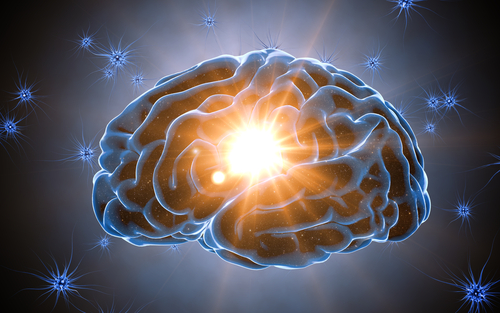Deep Brain Stimulation for Parkinson’s Disease: The Past and What the Future Holds
Written by |

Despite being used for the past 30 years to treat chronic neurological diseases, including Parkinson’s disease (PD), deep brain stimulation (DBS) “remains a fascinating puzzle to scientists, physicians, and engineers,” the lead author of a new review study said.
Challenges the technique presents for both clinicians and engineers include the design of novel, more efficient DBS therapies, the existence of redundancy in clinical outcomes, and a high variability in patients’ responses to the therapy, according to the review, which summarizes what has been achieved so far and what lies ahead for deep brain stimulation.
The review “Systems approaches to optimizing deep brain stimulation therapies in Parkinson’s disease” appeared in the journal WIREs Systems Biology and Medicine.
Deep brain stimulation involves surgically implanting an electrode in the brain that is connected to an implanted pulse generator through subcutaneous wires. The pulse generator is programmed to deliver charge-balanced, voltage-controlled electric pulses.
Currently, deep brain stimulation is recommended to Parkinson’s disease patients in relatively advanced stages of the disease, who are still responsive to anti-PD medications, but have developed medication-induced dyskinesia — in which patients experience involuntary, jerky movements.
The therapy helps improve dyskinesia and other motor complications, and is linked to a more efficient and prolonged management of disease symptoms and a lower usage of anti-PD medications (up to 50 percent).
“Although effective and generally safe, DBS [deep brain stimulation] remains a fascinating puzzle to scientists, physicians, and engineers,” lead author Dr. Sabato Santaniello, of the University of Connecticut, said in a press release. “The therapeutic mechanisms of DBS, in fact, are still elusive and the current, semi-permanent stimulation protocols have often motivated the investigation of ways to make DBS less invasive and more efficient.”
“The set of therapeutic DBS programs is overall larger than initially hypothesized. New tools and methods are therefore necessary to search this set and to systematically identify the most adequate DBS program for each patient,” the authors write in their review. “These solutions are still in their early stages and need to translate from preclinical testing phases to clinical trials.”
Developing more efficient deep brain stimulation therapies has proven challenging. The relatively poor understanding of the cellular mechanisms underlying deep brain stimulation therapeutic effects has impaired its progression.
In the review, the authors gather current data which suggests that novel, low-power deep brain stimulation solutions can be devised, preserving the clinical benefits of current DBS therapies while addressing its major limitations, such as inefficient battery consumption, the need for lengthy manual programming, and the widespread influence on nearby cognitive loops with possible adverse side effects.
There is currently little information on how variations in the different deep brain stimulation programs may lead to potential different outcomes.
There is also a high variability in patients’ responses to deep brain stimulation, which requires careful adjustments to the electric stimulation. Networks involving brain structures are made up of interconnected large groups of nerve cells where information may be corrupted and communicated with delays.
The technique also influences brain dynamics in a nontrivial way, as it changes the extracellular environment in surrounding structures, which in turn can affect the activity of each nerve cell.





